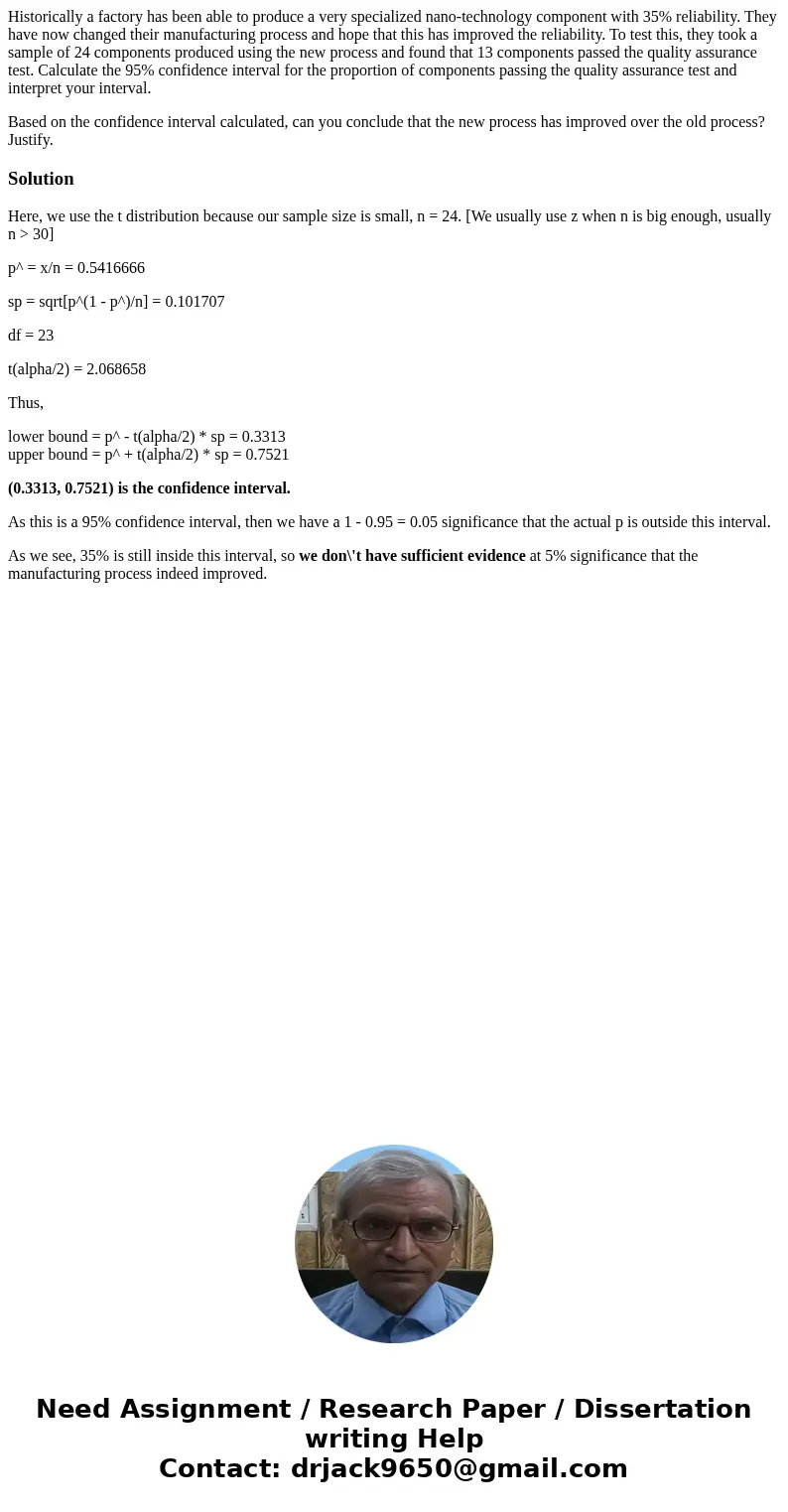Historically a factory has been able to produce a very speci
Historically a factory has been able to produce a very specialized nano-technology component with 35% reliability. They have now changed their manufacturing process and hope that this has improved the reliability. To test this, they took a sample of 24 components produced using the new process and found that 13 components passed the quality assurance test. Calculate the 95% confidence interval for the proportion of components passing the quality assurance test and interpret your interval.
Based on the confidence interval calculated, can you conclude that the new process has improved over the old process? Justify.
Solution
Here, we use the t distribution because our sample size is small, n = 24. [We usually use z when n is big enough, usually n > 30]
p^ = x/n = 0.5416666
sp = sqrt[p^(1 - p^)/n] = 0.101707
df = 23
t(alpha/2) = 2.068658
Thus,
lower bound = p^ - t(alpha/2) * sp = 0.3313
upper bound = p^ + t(alpha/2) * sp = 0.7521
(0.3313, 0.7521) is the confidence interval.
As this is a 95% confidence interval, then we have a 1 - 0.95 = 0.05 significance that the actual p is outside this interval.
As we see, 35% is still inside this interval, so we don\'t have sufficient evidence at 5% significance that the manufacturing process indeed improved.

 Homework Sourse
Homework Sourse